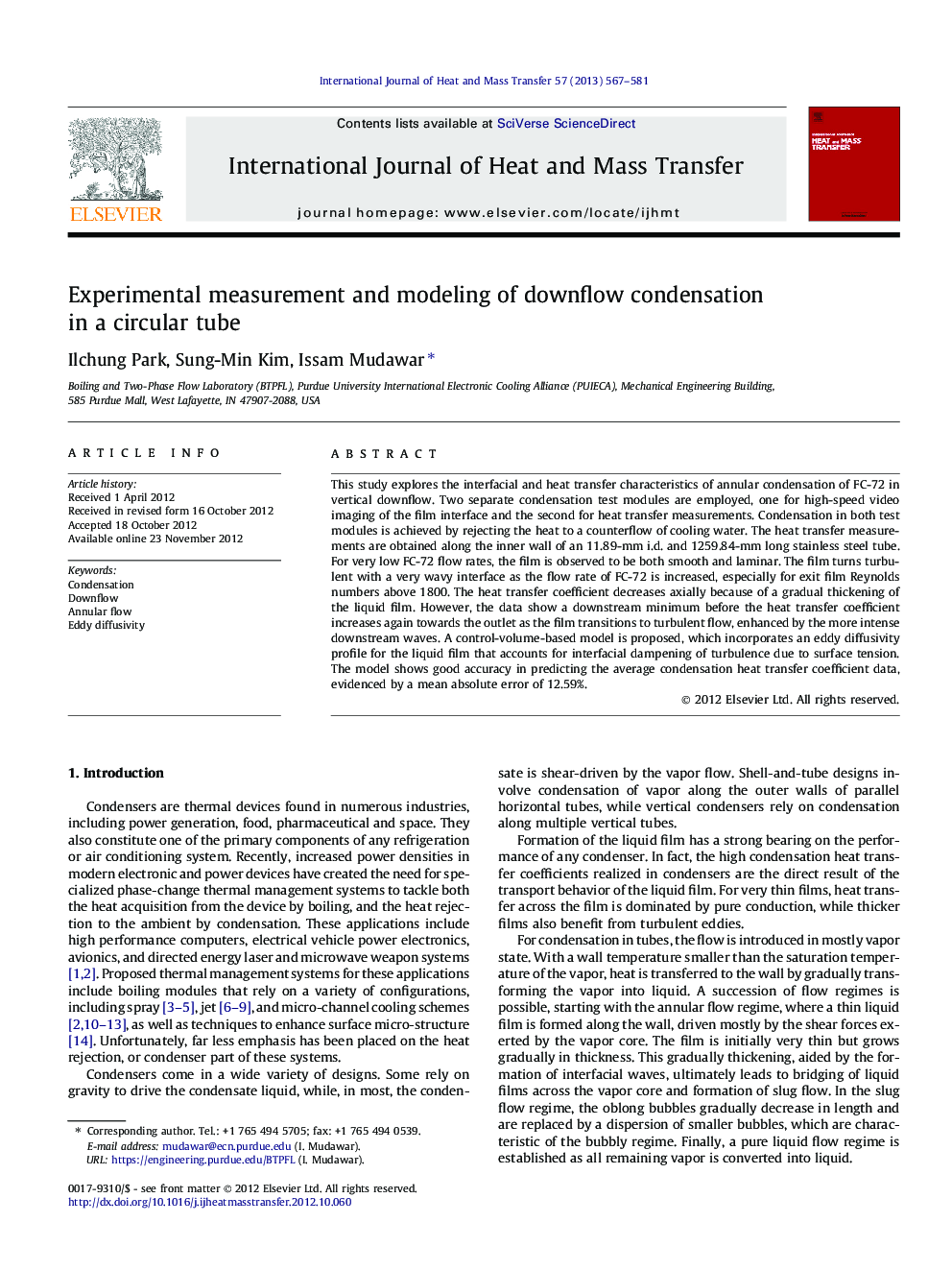| Article ID | Journal | Published Year | Pages | File Type |
|---|---|---|---|---|
| 7059055 | International Journal of Heat and Mass Transfer | 2013 | 15 Pages |
Abstract
This study explores the interfacial and heat transfer characteristics of annular condensation of FC-72 in vertical downflow. Two separate condensation test modules are employed, one for high-speed video imaging of the film interface and the second for heat transfer measurements. Condensation in both test modules is achieved by rejecting the heat to a counterflow of cooling water. The heat transfer measurements are obtained along the inner wall of an 11.89-mm i.d. and 1259.84-mm long stainless steel tube. For very low FC-72 flow rates, the film is observed to be both smooth and laminar. The film turns turbulent with a very wavy interface as the flow rate of FC-72 is increased, especially for exit film Reynolds numbers above 1800. The heat transfer coefficient decreases axially because of a gradual thickening of the liquid film. However, the data show a downstream minimum before the heat transfer coefficient increases again towards the outlet as the film transitions to turbulent flow, enhanced by the more intense downstream waves. A control-volume-based model is proposed, which incorporates an eddy diffusivity profile for the liquid film that accounts for interfacial dampening of turbulence due to surface tension. The model shows good accuracy in predicting the average condensation heat transfer coefficient data, evidenced by a mean absolute error of 12.59%.
Related Topics
Physical Sciences and Engineering
Chemical Engineering
Fluid Flow and Transfer Processes
Authors
Ilchung Park, Sung-Min Kim, Issam Mudawar,
